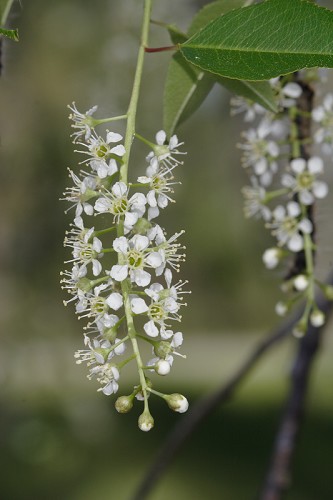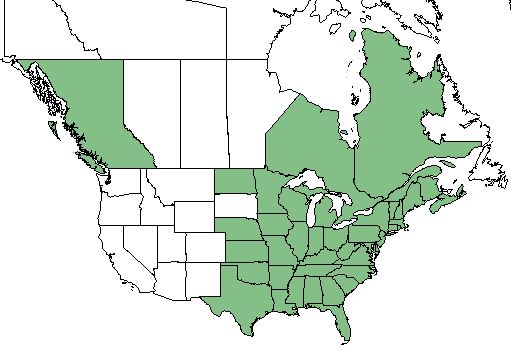Difference between revisions of "Prunus serotina"
(→Ecology) |
|||
| Line 39: | Line 39: | ||
<!--===Fire ecology===--> <!--Fire tolerance, fire dependence, adaptive fire responses--> | <!--===Fire ecology===--> <!--Fire tolerance, fire dependence, adaptive fire responses--> | ||
<!--===Pollination===--> | <!--===Pollination===--> | ||
| − | + | ===Use by animals=== <!--Herbivory, granivory, insect hosting, etc.--> | |
| + | ''P. serotina'' is a bird-dispersed species. <ref name= "Leck 1998"> Leck, M. A. and C. F. Leck (1998). "A ten-year seed bank study of old field succession in central New Jersey." The Journal of the Torrey Botanical Society 125(1): 11-32. </ref> | ||
<!--==Diseases and parasites==--> | <!--==Diseases and parasites==--> | ||
Revision as of 14:23, 18 June 2018
Common name: wild black cherry [1]
| Prunus serotina | |
|---|---|

| |
| Photo by John Gwaltney hosted at Southeastern Flora.com | |
| Scientific classification | |
| Kingdom: | Plantae |
| Division: | Magnoliophyta - Flowering plants |
| Class: | Magnoliopsida - Dicots |
| Order: | Rosales |
| Family: | Rosaceae |
| Genus: | Prunus |
| Species: | P. serotina |
| Binomial name | |
| Prunus serotina Ehrh. | |

| |
| Natural range of Prunus serotina from USDA NRCS Plants Database. | |
Contents
Taxonomic Notes
Synonyms: Prunus serotina ssp. serotina
Varieties: Prunus speciosa (Koidzumi) Nakai; Prunus spinosa L.
Description
P. serotina is a perennial shrub/tree of the Rosaceae family native to North America and Canada. [2]
Distribution
P. serotina is found in the eastern half of the United States excluding South Dakota, as well as the British Columbia, Ontario, and Quebec regions of Canada. [2]
Ecology
Habitat
P. serotina proliferates in rich coves, bottomlands, northern hardwood forests, and in a wide variety of lower elevation habitats from dry to mesic, and weedy in fencerows. [1]
Phenology
P. serotina flowers February-April. [3]
Use by animals
P. serotina is a bird-dispersed species. [4]
Conservation and Management
Cultivation and restoration
Photo Gallery
References and notes
- ↑ 1.0 1.1
- ↑ 2.0 2.1 USDA Plant Database https://plants.usda.gov/core/profile?symbol=PRSES
- ↑ PanFlora Author: Gil Nelson URL: http://www.gilnelson.com/PanFlora/ Date Accessed: 5/24/18
- ↑ Leck, M. A. and C. F. Leck (1998). "A ten-year seed bank study of old field succession in central New Jersey." The Journal of the Torrey Botanical Society 125(1): 11-32.